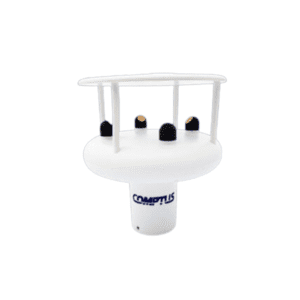
Wind measurement plays a crucial role in various industrial settings. This includes weather stations, environmental monitoring systems, agriculture, renewable energy, and infrastructure protection. Two common technologies dominate this space: ultrasonic wind sensors and mechanical wind sensors.
Each sensor type comes with distinct advantages and considerations. Understanding the difference between the two helps select the right instrument for operational needs, environmental conditions, and maintenance expectations.
Mechanical Wind Sensors: Reliable by Design
Mechanical wind sensors are also known as cup and vane anemometers. These sensors have long been the go-to choice for measuring wind speed and direction. They operate using rotating cups or propellers to measure wind speed, and a wind vane to track direction.
Key Features:
- Moving Parts: Operate with physical rotation, making readings dependent on mechanical motion.
- Analog or Digital Output: Compatible with a range of industrial monitoring systems.
- Simple Installation: Well-suited for many standard applications.
Advantages:
- Proven technology with decades of use
- Cost-effective for routine industrial monitoring
- Effective in low to moderate wind speeds
Considerations:
- Requires routine calibration and cleaning
- Moving parts wear down over time
- May underperform in freezing or dusty conditions
For facilities operating in relatively stable climates or where regular maintenance is manageable, mechanical sensors offer a practical solution.
Ultrasonic Wind Sensors: Precision Without Moving Parts
Ultrasonic wind sensors use high-frequency sound waves to measure wind speed and direction. The sensor calculates the time it takes for ultrasonic pulses to travel between transducers. This helps it determine wind characteristics without any moving components.
Key Features:
- No Moving Parts: Minimal mechanical wear
- Real-Time Data Output: Fast and highly responsive readings
- Multidirectional Sensing: Captures three-dimensional wind flow
Advantages:
- Low maintenance with fewer parts to service
- Performs well in harsh or remote environments
- Greater accuracy in fluctuating conditions
Considerations:
- Higher upfront cost compared to mechanical sensors
- Sensitive to obstructions and installation angles
- May require specialized mounting for optimal performance
These sensors are ideal for industries seeking consistent data in challenging environments or remote sites with limited maintenance access.
Comparing Performance in Industrial Applications
With a better understanding of what mechanical and ultrasonic sensors are, here is a comparison to make an informed choice.
| Criteria | Mechanical Sensors | Ultrasonic Sensors |
| Environmental Resilience | Mechanical sensors perform reliably under mild to moderate conditions, but may freeze or clog in the presence of snow, salt, or sand. | Ultrasonic sensors are better suited for extreme environments due to their sealed design and solid-state construction. |
| Maintenance Requirements | Mechanical types require regular cleaning, lubrication, and replacement of parts. | Ultrasonic sensors are virtually maintenance-free, reducing long-term upkeep costs. |
| Installation Flexibility | Mechanical sensors offer simple installation but require calibration. | Ultrasonic models must be properly aligned and mounted, but they often offer plug-and-play data integration. |
| Data Accuracy | Mechanical sensors can lag in rapidly changing wind conditions. | Ultrasonic sensors provide near-instantaneous, high-resolution data, making them ideal for automation systems and real-time decision-making. |
Select Sensors That Match the Mission
The choice between ultrasonic and mechanical wind sensors hinges on more than just cost—it depends on environmental factors, accuracy requirements, and long-term maintenance goals. For industries that rely on consistent, real-time environmental data, ultrasonic wind speed sensors provide long-term efficiency. Meanwhile, mechanical wind sensors remain a dependable choice where budgets or simplicity dictate.
For advanced wind measurement solutions, visit Comptus to learn more about ultrasonic wind sensors tailored for industrial use.
